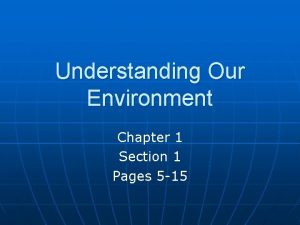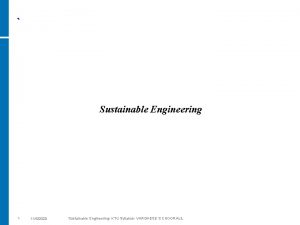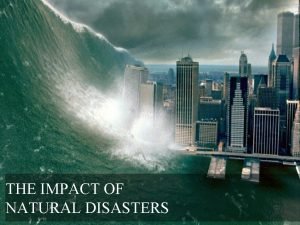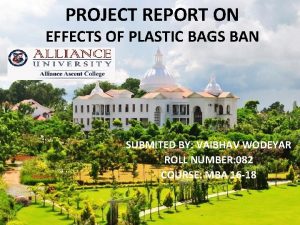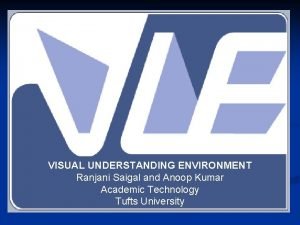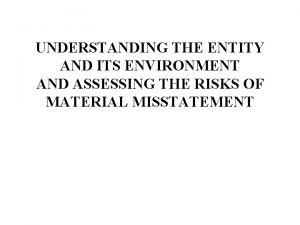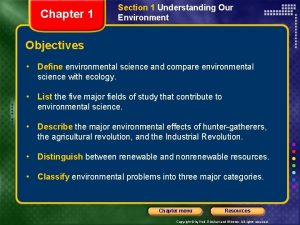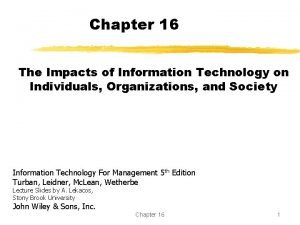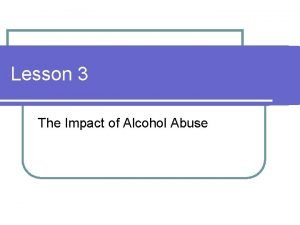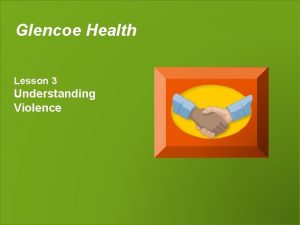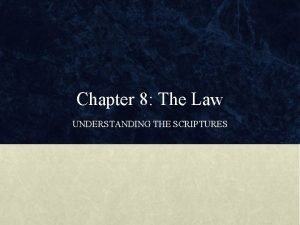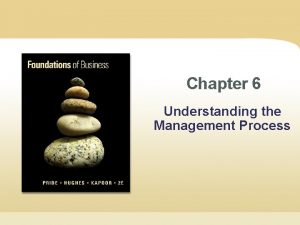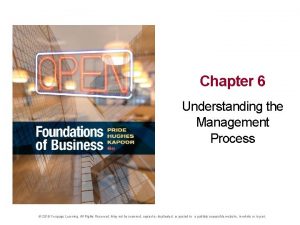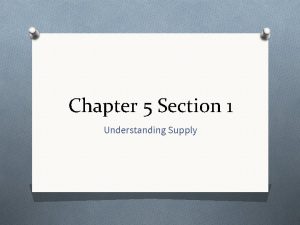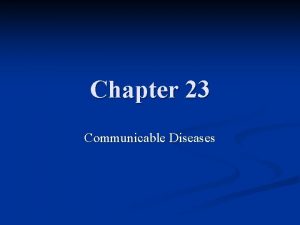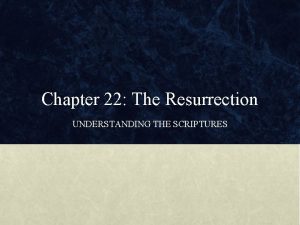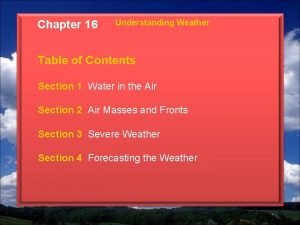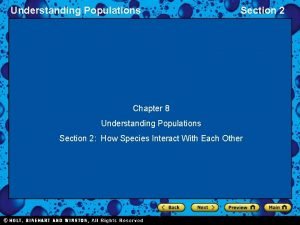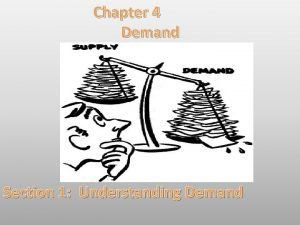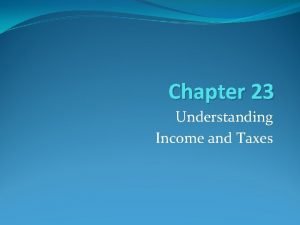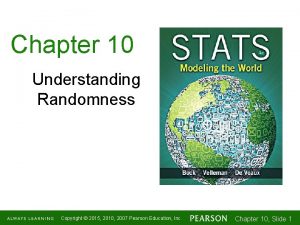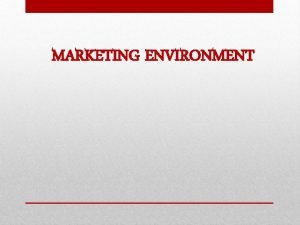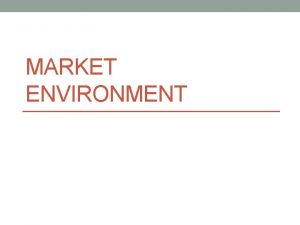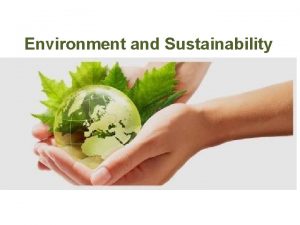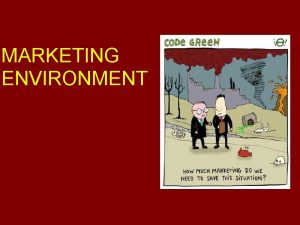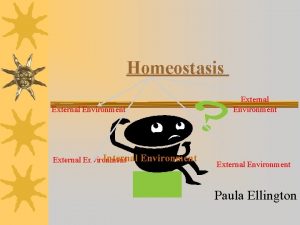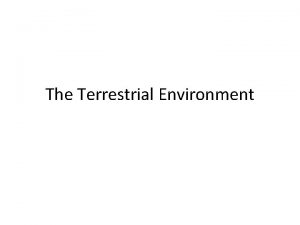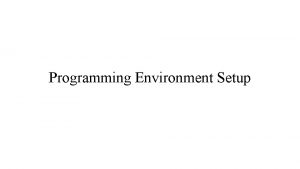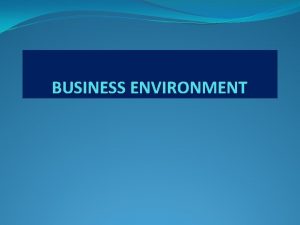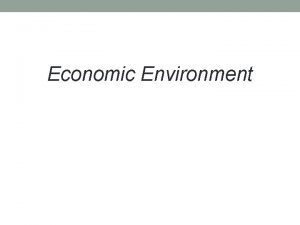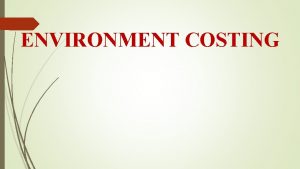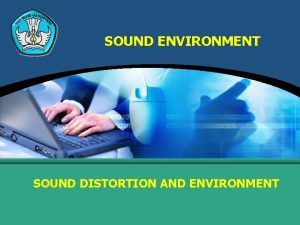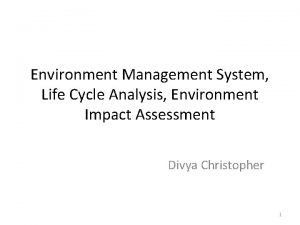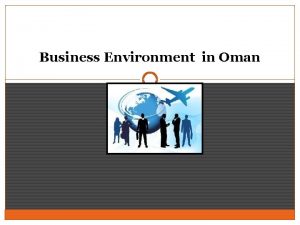Chapter The Impact of Environment 6 Understanding the




































- Slides: 36

Chapter The Impact of Environment 6 Understanding the Theory & Design of Organizations Eleventh Edition Richard L. Daft © 2013 Cengage Learning. All Rights Reserved. May not be scanned, copied or duplicated, or posted to a publicly accessible website, in whole or in part.

The Organization Environment • All the elements that exist outside the boundary of the organization • Potential to affect all or part of the organization – Domain is the chosen environmental field of action – Sectors or subdivisions that contain similar elements 2 © 2013 Cengage Learning. All Rights Reserved. May not be scanned, copied or duplicated, or posted to a publicly accessible website, in whole or in part.

An Organization’s Environment © 2013 Cengage Learning. All Rights Reserved. May not be scanned, copied or duplicated, or posted to a publicly accessible website, in whole or in part.

The Task Environment Sectors that the organization interacts with directly to achieve goals – Typically the “industry” and market sectors – Human Resources – International Sector – Raw Materials Sector 4 © 2013 Cengage Learning. All Rights Reserved. May not be scanned, copied or duplicated, or posted to a publicly accessible website, in whole or in part.

General Environment • Sectors that might not have a direct impact on the daily operations of a firm – Government sector: regulation – Sociocultural sector: the green movement – Economic conditions: global recession – Technology sector: massive and constant changes – Financial resources • Extremely important to entrepreneurs 5 © 2013 Cengage Learning. All Rights Reserved. May not be scanned, copied or duplicated, or posted to a publicly accessible website, in whole or in part.

International Environment • Can directly affect many organizations • Has grown in importance • Distinction between foreign and domestic operations • All organizations face domestic and global uncertainty 6 © 2013 Cengage Learning. All Rights Reserved. May not be scanned, copied or duplicated, or posted to a publicly accessible website, in whole or in part.

The Changing Environment • The dimensions of the environment range: – Unstable – Homogeneous – Heterogeneous – Simple – Complex Organizations must cope with and manage uncertainty to be effective. • The dimensions boil down to: – The need for information about the environment – The need for resources from the environment 7 © 2013 Cengage Learning. All Rights Reserved. May not be scanned, copied or duplicated, or posted to a publicly accessible website, in whole or in part.

Dimensions of the Environment • Simple-complex: heterogeneity; the number of dissimilarity of external elements • Stable-Unstable: whether elements in the environment are dynamic 8 © 2013 Cengage Learning. All Rights Reserved. May not be scanned, copied or duplicated, or posted to a publicly accessible website, in whole or in part.

Framework for Assessing Environmental Uncertainty 9 © 2013 Cengage Learning. All Rights Reserved. May not be scanned, copied or duplicated, or posted to a publicly accessible website, in whole or in part.

Adapting to a Changing Environment • Organizations need the right fit between internal structure and the external environment – Adding Positions and Departments – Building Relationships • Boundary-spanning roles • Business intelligence – Differentiation and Integration – Organic vs. Mechanistic Management Process – Planning, Forecasting, and Responsiveness 10 © 2013 Cengage Learning. All Rights Reserved. May not be scanned, copied or duplicated, or posted to a publicly accessible website, in whole or in part.

Organizational Departments Differentiate to Meet Needs of Sub-environments 11 © 2013 Cengage Learning. All Rights Reserved. May not be scanned, copied or duplicated, or posted to a publicly accessible website, in whole or in part.

Different Goals and Orientations among Departments 12 © 2013 Cengage Learning. All Rights Reserved. May not be scanned, copied or duplicated, or posted to a publicly accessible website, in whole or in part.

Environmental Uncertainty and Organizational Integrators 13 © 2013 Cengage Learning. All Rights Reserved. May not be scanned, copied or duplicated, or posted to a publicly accessible website, in whole or in part.

Mechanistic and Organic Forms • Tasks are specialized • Tasks are rigidly defined • Strict hierarchy of authority and control • Knowledge and control of tasks are centralized • Communication is vertical • Employees contribute to the common task of the department • Tasks are adjusted and redefined through teamwork • Less hierarchy of authority and control • Knowledge and control of tasks are located anywhere in the organization • Communication is horizontal 14 © 2013 Cengage Learning. All Rights Reserved. May not be scanned, copied or duplicated, or posted to a publicly accessible website, in whole or in part.

Contingency Framework for Uncertainty and Organizational Responses 15 © 2013 Cengage Learning. All Rights Reserved. May not be scanned, copied or duplicated, or posted to a publicly accessible website, in whole or in part.

Dependence on External Resources Resource-dependence perspective means organizations depend on the environment – Strive to acquire control over resources to minimize dependence – Organizations are vulnerable if resources are controlled by other organizations – Minimize vulnerabilities – Will team up with others when resources are scarce 16 © 2013 Cengage Learning. All Rights Reserved. May not be scanned, copied or duplicated, or posted to a publicly accessible website, in whole or in part.

Influencing External Resources • Balance linkages and independence • Reach out and change or control elements in the environment 1. Establish favorable relationships with key elements of the environment 2. Shape the environment by influencing key sectors 17 © 2013 Cengage Learning. All Rights Reserved. May not be scanned, copied or duplicated, or posted to a publicly accessible website, in whole or in part.

Organizing Strategies for Controlling the External Environment 18 © 2013 Cengage Learning. All Rights Reserved. May not be scanned, copied or duplicated, or posted to a publicly accessible website, in whole or in part.

Environmental Characteristics and Organizational Actions 19 © 2013 Cengage Learning. All Rights Reserved. May not be scanned, copied or duplicated, or posted to a publicly accessible website, in whole or in part.

Design Essentials ü Change and complexity have major implications for organizations ü Organizational environment differs regarding uncertainty and resource dependence ü The goal for organizations is managing efficiencies and survival ü Managers must understand how the environment influences the structure of an organization ü When risk is great, organizations can attempt to change or influence the environment ü Organizations can learn and adapt to the environment 20 © 2013 Cengage Learning. All Rights Reserved. May not be scanned, copied or duplicated, or posted to a publicly accessible website, in whole or in part.

Chapter Corporate Culture and Values 6 Understanding the Theory & Design of Organizations Eleventh Edition Richard L. Daft © 2013 Cengage Learning. All Rights Reserved. May not be scanned, copied or duplicated, or posted to a publicly accessible website, in whole or in part.

What is Culture? • Values, norms, guiding beliefs, and understandings that are shared by members of an organization – Taught to new members as the correct way to think, feel, and behave • Organizational culture exists at two levels – Observable symbols – Underlying values 22 © 2013 Cengage Learning. All Rights Reserved. May not be scanned, copied or duplicated, or posted to a publicly accessible website, in whole or in part.

Levels of Corporate Culture © 2013 Cengage Learning. All Rights Reserved. May not be scanned, copied or duplicated, or posted to a publicly accessible website, in whole or in part.

Emergence and Purpose of Culture Provides sense of organizational identity Two critical functions in organizations: 1. To integrate members so they know how to relate to one another 2. To help organization adapt to external environment Internal Integration – collective identity and know how to work together External Adaption – how the organization meets goals and deals with outsiders 24 © 2013 Cengage Learning. All Rights Reserved. May not be scanned, copied or duplicated, or posted to a publicly accessible website, in whole or in part.

Observable Aspects of Organizational Culture 25 © 2013 Cengage Learning. All Rights Reserved. May not be scanned, copied or duplicated, or posted to a publicly accessible website, in whole or in part.

Organizational Chart for Nordstrom’s structure reflects the emphasis the department store chain puts on empowering and supporting lower-level employees. 26 © 2013 Cengage Learning. All Rights Reserved. May not be scanned, copied or duplicated, or posted to a publicly accessible website, in whole or in part.

Organizational Design and Culture Managers want a corporate culture that reinforces the strategy and structural design the organization needs to be effective within environment. © 2013 Cengage Learning. All Rights Reserved. May not be scanned, copied or duplicated, or posted to a publicly accessible website, in whole or in part.

Culture Strength and Organizational Subcultures • Culture strength is the degree of agreement among members of an organization about specific values • Subcultures reflect the common problems, goals, and experiences of a team or department • Different departments may have their own norms 28 © 2013 Cengage Learning. All Rights Reserved. May not be scanned, copied or duplicated, or posted to a publicly accessible website, in whole or in part.

Organizational Culture, Learning, and Performance • Culture is important to learning and innovation during challenging times • Strong adaptive cultures often incorporate the following values: 1. The whole is more important than the parts 2. Equality and trust are primary values 3. The culture encourages risk taking, change, and improvement 29 © 2013 Cengage Learning. All Rights Reserved. May not be scanned, copied or duplicated, or posted to a publicly accessible website, in whole or in part.

Ethical Values and Social Responsibility Ethics – Ethics refer to the code of moral principles and values that govern the behaviors of a person or group with respect to what is right or wrong Managerial Ethics – Ethical decisions go far beyond behaviors governed by law – Managerial ethics guide the decisions and behaviors of managers 30 © 2013 Cengage Learning. All Rights Reserved. May not be scanned, copied or duplicated, or posted to a publicly accessible website, in whole or in part.

Sources of Individual Ethical Principles and Actions 31 © 2013 Cengage Learning. All Rights Reserved. May not be scanned, copied or duplicated, or posted to a publicly accessible website, in whole or in part.

Relationship between the Rule of Law and Ethical Standards 32 © 2013 Cengage Learning. All Rights Reserved. May not be scanned, copied or duplicated, or posted to a publicly accessible website, in whole or in part.

How Managers Shape Culture and Ethics • Value-Based Leadership • Formal Structure and Systems – Structure – Disclosure Mechanisms – Code of Ethics – Training Programs • Managers play key role in providing leadership and examples of ethical behavior 33 © 2013 Cengage Learning. All Rights Reserved. May not be scanned, copied or duplicated, or posted to a publicly accessible website, in whole or in part.

Characteristics of Values-Based Leaders 34 © 2013 Cengage Learning. All Rights Reserved. May not be scanned, copied or duplicated, or posted to a publicly accessible website, in whole or in part.

Corporate Culture and Ethics in a Global Environment • The global environment presents tough ethical challenges • Countries have varied attitudes and beliefs • Components that characterize a global culture: – Multicultural rather than national values – Basing status on merit rather than nationality • Managers must think broadly about ethics • Social audits measure and report ethical, social, and environmental impact of a company’s operation 35 © 2013 Cengage Learning. All Rights Reserved. May not be scanned, copied or duplicated, or posted to a publicly accessible website, in whole or in part.

Design Essentials ü Cultural and ethical values help determine the organization’s social capital and can contribute to success ü Managers can use rites and ceremonies, stories, symbols, structures, control systems, and power relationships to influence culture ü Subcultures may emerge even in strong cultures ü Strong cultures can be constructive or non-constructive ü Managerial ethics and corporate responsibility are important aspects of organizational values ü Managers can shape culture and ethics through formal systems ü Social audits are important tools for companies trying to maintain high ethical standards 36 © 2013 Cengage Learning. All Rights Reserved. May not be scanned, copied or duplicated, or posted to a publicly accessible website, in whole or in part.
 Chapter 1 section 1 understanding our environment answers
Chapter 1 section 1 understanding our environment answers Environmental impact assessment syllabus ktu
Environmental impact assessment syllabus ktu Environmental impacts of tidal energy
Environmental impacts of tidal energy Effects of environmental disasters
Effects of environmental disasters Objectives of plastic bags
Objectives of plastic bags Visual understanding environment
Visual understanding environment Understanding the entity and its environment
Understanding the entity and its environment Section 1 understanding our environment answer key
Section 1 understanding our environment answer key Environment of business finance
Environment of business finance Chapter 27 human impact on earth resources
Chapter 27 human impact on earth resources Chapter 16 the impact of technology
Chapter 16 the impact of technology Chapter 16 human impact on ecosystems
Chapter 16 human impact on ecosystems Chapter 7 lesson 4 the war's impact
Chapter 7 lesson 4 the war's impact Chapter 16 human impact on ecosystems
Chapter 16 human impact on ecosystems Chapter 21 lesson 3 the impact of alcohol abuse
Chapter 21 lesson 3 the impact of alcohol abuse Chapter 9 lesson 3 understanding violence
Chapter 9 lesson 3 understanding violence Understanding the scriptures chapter 24 study questions
Understanding the scriptures chapter 24 study questions Chapter 6 understanding the management process
Chapter 6 understanding the management process The process of evaluating and regulating ongoing activities
The process of evaluating and regulating ongoing activities Chapter 5 section 1 understanding supply
Chapter 5 section 1 understanding supply Chapter 23 communicable diseases
Chapter 23 communicable diseases Understanding the scriptures chapter 22 study questions
Understanding the scriptures chapter 22 study questions Understanding the scriptures chapter 20 study questions
Understanding the scriptures chapter 20 study questions Chapter 16 section 3 severe weather answer key
Chapter 16 section 3 severe weather answer key Chapter 8 understanding populations
Chapter 8 understanding populations Chapter 4 lesson 1 understanding stress
Chapter 4 lesson 1 understanding stress Chapter 4 section 1 understanding demand
Chapter 4 section 1 understanding demand Chapter 23 understanding income and taxes
Chapter 23 understanding income and taxes Understanding randomness chapter 10
Understanding randomness chapter 10 Understanding your health and wellness chapter 1
Understanding your health and wellness chapter 1 Understanding your health and wellness
Understanding your health and wellness Chapter 1 understanding your health and wellness
Chapter 1 understanding your health and wellness Understanding human communication 14th edition chapter 1
Understanding human communication 14th edition chapter 1 Chapter 1 understanding health and wellness lesson 4
Chapter 1 understanding health and wellness lesson 4 Glencoe health chapter 1 understanding health and wellness
Glencoe health chapter 1 understanding health and wellness Chapter 1 lesson 2 what affects your health
Chapter 1 lesson 2 what affects your health Understanding health and wellness
Understanding health and wellness
